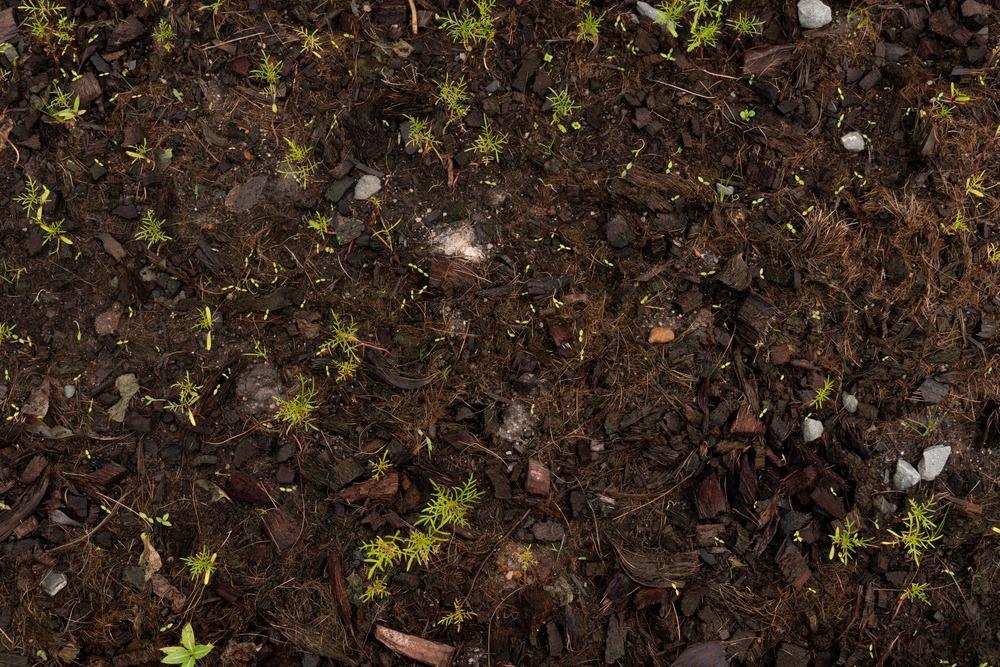From gardens to agricultural fields, humus is a key element in the nutrient cycle of terrestrial systems. However, monocultural practices and artificial fertilizers have led to a decrease in humic content and soil health, which may jeopardize future food security.

Image Credit: jpreat/Shutterstock.com
Decaying matter and nutrient provisioning – the environmental role of humus
Not to be confused with ‘hummus,’ the oriental dip made of mashed chickpeas, humus refers to organic material formed in soil when plants and animal matter decays. Typically produced through composting, humus is a thick dark substance that remains once organic litter decomposes. Once it is formed, humus is mixed into soil by earthworms and other organisms.
In soil, humus mixes with minerals and helps keep the system healthy as humus contains many nutrients, including nitrogen, that is key to plant health and growth. As a result, humus plays a key role within ecosystems by providing essential nutrients derived from decayed organic litter and is, therefore, a central element in nutrient cycling in terrestrial systems.
Due to its beneficial properties and nitrogen content, humus is vital for agricultural practices. Findings have found humus makes soil more fertile, prevents diseases, and allows access for oxygen and water to reach plant roots by loosening the soil. Consequently, agricultural scientists have explored the role of humus across terrestrial systems to harness its beneficial properties.
Understanding the dynamics and benefits of humus
The development of effective composting has allowed widespread use of humus since the early 20th century. The first established definition of humus from 1936 describes it as follows; “Chemically, humus consists of certain constituents of the original plant material resistant to further decomposition; of substances undergoing decomposition; of complexes resulting from decomposition, either by processes of hydrolysis or by oxidation and reduction; and of various compounds synthesized by microorganisms.”
In a review chapter, Piccolo reviews the scientific literature related to the importance of different humus present in soils, particularly regarding the stabilization of soil aggregates. Specifically, the chapter describes how humic materials are responsible for soil aggregation in natural and agricultural environments. This, in turn, increases the diversity and richness of species in terrestrial ecosystems.
As a result, the author emphasizes the value of conservation and enhancement of humus in soils to benefit plant nutrient supply, soil structure, compactability, and water-holding capacity. The chapter then concludes by discussing elements for further research, particularly addressing microbial degradation of soils and how artificial humus may mimic its action.
Developing a more context-dependent humus, faster acting, and more cost-effective will better stabilize healthy soils. This is of increasing importance as soil health has been degrading over the last century due to intensive agricultural activity that focuses on monocultures, uses pesticides, and degrades habitats.
Modeling the scale of effects generated by humus
In an attempt to better understand the dynamics of humic materials in soil, recent studies have considered the large-scale distribution of humus in agricultural areas. This was the focus of a 2021 study by Bobreko et al., who examined the humus content of Russian agricultural soils.
Findings revealed that intensive agricultural practices have resulted in decreased humic content over the 28-year study period, with areas of high humic content decreasing from 1118.5 (55.1%) to 702.0 thousand ha (34.6% of the surveyed area). Comparing different ecosystems also revealed neighboring systems also experienced reductions in humic content. Authors suggest the main reason for the decrease in humus is the erosion of soil and the very low level of organic fertilizers use.
From larger spatial scales to finer biological levels, other studies have also considered the molecular function of humus. Drosos and Piccolo published a 2019 study considering how the decrease in soil health may be prevented by improving our knowledge of soil humus dynamics at the molecular level.
The authors show that the molecular composition of the soil humeome, which refers to the genetic composition of humus, is affected by agricultural practices. Indeed, using a combined analysis of gas and mass spectrophotometry, findings demonstrated that the Humeome changed substantially after 1 and 3 years of conventional tillage under maize cropping. This novel technique allowed for more accurate data on genes involved in humus functioning and showed that prolonged tillage resulted in a potential loss of small nitrogen-rich compounds.
Understanding and harnessing the beneficial effects of humus may be a key strategy to avoiding further degradation of soil health. Maintaining good soil health will lead to better-stabilized food security.
What is HUMUS?
Sources:
- Baveye, P. C., & Wander, M. (2019). The (Bio)Chemistry of Soil Humus and Humic Substances: Why Is the “New View” Still Considered Novel After More Than 80 Years? Frontiers in Environmental Science, 7. https://doi.org/10.3389/fenvs.2019.00027
- Bobrenko, I. A., Matveychik, O. A., Bobrenko, E. G., & Popova, V. I. (2021). Changes in humus content in forest-steppe soils of Western Siberia. IOP Conference Series: Earth and Environmental Science, 624(1), 012219. https://doi.org/10.1088/1755-1315/624/1/012219
- Drosos, M., & Piccolo, A. (2018). The molecular dynamics of soil humus as a function of tillage. Land Degradation & Development, 29(6), 1792–1805. https://doi.org/10.1002/ldr.2989
- Piccolo, A. (1996). Humus and Soil Conservation. Humic Substances in Terrestrial Ecosystems, 225–264. https://doi.org/10.1016/b978-044481516-3/50006-2
Further Reading